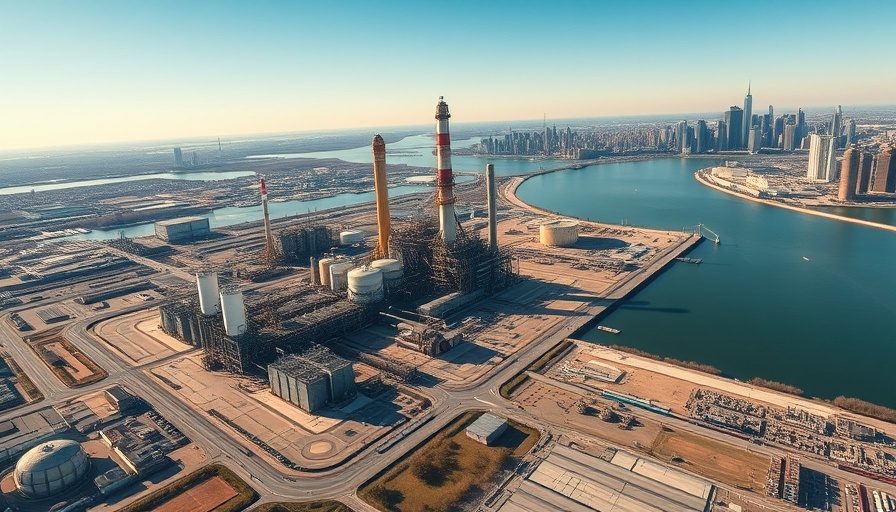
Community Voices Rise Against Newark's $180M Gas Plant
In a city like Newark, where residents are already grappling with various economic and environmental challenges, the proposal to build a $180 million gas plant has sparked a heated debate among city officials and local residents. The contentious nature of this discussion highlights the complexities associated with energy development in urban areas, particularly those with communities rich in social activism.
The Local Landscape: A Microcosm of Broader Issues
Newark, New Jersey, known for its rich history and diverse population, presents a unique backdrop for this energy project. The city has seen substantial investments in technology and urban renewal, which contrast sharply with the fossil fuel plant's anticipated environmental impact. Local activists see this as more than just an energy issue; it symbolizes a larger struggle against environmental injustice, attempting to prioritize sustainable energy solutions over traditional fossil fuel dependency.
Concerns From Residents: A Closer Look
Residents of Newark have expressed significant apprehension about the proposed gas plant, fearing it will contribute to air pollution, adversely affect public health, and even curb ongoing community improvements. Local groups argue that investing in renewables instead of fossil fuels would better serve Newark’s long-term goals and the health of its residents. Organizers have set in motion a grassroots campaign to inform fellow residents about the potential risks of this gas facility.
Historical Context: Learning from the Past
Historically, cities across America have turned to gas plants as a flexible energy source during earlier waves of industrialization. However, many communities, including Newark, now confront the environmental costs associated with fossil fuels. This history underlines the growing awareness and advocacy for cleaner energy alternatives that has emerged over the last two decades as communities like Newark begin to articulate their concerns and champion change.
Industry Perspectives: The Case for the Gas Plant
Proponents of the gas plant argue that it will create jobs and bolster the local economy, providing energy stability for Newark residents. They posit that natural gas is a cleaner alternative to other fossil fuels and a necessary bridge while transitioning to renewable resources. However, this argument does not assuage concerns from residents who see this project as an impediment to progress toward a sustainable future.
What’s Next? Predictions for Newark’s Energy Future
As Newark grapples with this decision, the outcome could set a precedent for similar cities facing the challenges of energy development versus environmental sustainability. If the gas plant plan moves forward, it may galvanize opposition elsewhere; alternatively, rejecting the project could empower more communities to advocate for renewable energy and environmental justice.
Actionable Insights for Homeowners and Contractors
Homeowners and contractors alike must pay attention to the ongoing conversation surrounding energy projects like the Newark gas plant. With a significant shift towards sustainability, understanding local energy developments could influence not only how services are delivered but also the type of services that may be in demand in the near future. Engaging in civic discussions can help contractors gain insight into emerging trends, while homeowners can advocate for cleaner energy solutions that align with their values.
Join the Conversation: Civic Engagement as a Tool for Change
Whether you’re a contractor or a homeowner, it’s crucial to stay informed about developments in your local community. Engage in conversations with local leaders, attend public meetings, and voice your opinions. The decisions made regarding Newark's gas plant could ripple through the wider energy landscape, influencing future policies and investments in renewable energy sources.
In this era of transformation, advocacy for sustainable energy solutions can either empower your community or stall its progress. Mobilizing around issues like the Newark gas plant is an investment in not just your homes but the broader environment.
 Add Row
Add Row  Add
Add 




Write A Comment